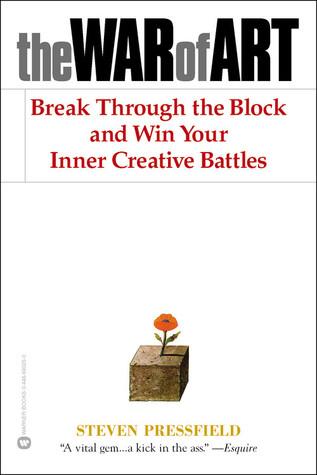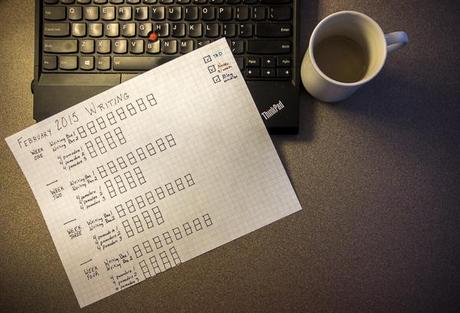 Welcome to the Read Along of The War of Art by Steven Pressfield! This is the third of three discussion posts. If you want to catch up, here are the other two:
Welcome to the Read Along of The War of Art by Steven Pressfield! This is the third of three discussion posts. If you want to catch up, here are the other two:
- Part 1
- Part 2
Sound interesting? Don’t miss the Twitter chat when there will be giveaways of The War of Art and three other books on creativity and writing by Steven Pressfield.
Today, we’re finishing up with a discussion of Book 3 and the book as a whole. If you’re joining in the discussion on your blog, don’t forget to leave a link in the link-up at the bottom of the post so we can all see your thoughts.
I sent the five questions below to every one who I knew wanted to participate. Here are my answers:
1. Do you experience a creative force that seems outside of yourself? What new ideas has this book provided for how to call on that?
I loved this description of how it all works:
This is the other secret that real artists know and wannabe writers don’t. When we sit down each day and do our work, power concentrates around us. The Muse takes note of our dedication. She approves. We have earned favor in her sight. When we sit down and work, we become like a magnetized rod that attracts iron filings. Ideas come. Insights accrete. p. 108
I have experienced a few visits from the Muse and want to encourage more! I like the idea of a ritual to begin my writing practice, but I haven’t come up with the right combination yet — rhymes feel too hokey, candles hurt my eyes, objets d’art are too fussy. For now, I’m pulling a file cart filled with resources next to my desk to make it more accessible and I’m looking at my 2015 mission statement.
2. What new ideas has this book provided for how to fight Resistance?
The book has motivated me to get serious about putting in the time. So serious that I’m making a sheet to keep track of it.

A tool to track my writing time in February.
I tried something similar last week and it worked well. Each box is a pomodoro, so roughly half an hour (including a 5-minute break). I didn’t fill in all the boxes last month, but a lot more than I would have without this tool.
3. Did the territorial versus hierarchical discussion ring true for you? How can you become more territorial in your approach to your creative work?
I liked this concept a lot. My creative efforts go haywire when I try to stack them up against others. I get pulled into thinking of my writing as a nascent career — with rankings and ladders. I’ll do better if I think of my writing as a garden — a small plot of ground that needs my love and energy, plus some compost, to yield beautiful results.
4. Now, that you’ve read Book 3, what do you think about the comments Robert McKee made about it in the foreword?
I’m wondering why Robert McKee, a famous writing teacher, doesn’t recognize a metaphor when he sees one. I prefer Pressfield’s version of inspiration coming from angels and muses, whether fact or as metaphor. I agree with Elizabeth Gilbert in this TED Talk that it’s safer and healthier for the artist to show up for the work, while letting inspiration arrive, or not, as it chooses.
5. Overall, what did you think about this book? Will it help you “win your inner creative battles” in 2015?
The War of Art has already helped me put the time in on my project. It’s a good thing I have more books by this author because I think I’m going to need some advanced help. What do you do when you work for an hour, but spent the whole time choosing a name for a minor character? It looks like writing in one sense, but operates more like resistance.
We’ll talk about this book and other books that support New Year’s resolutions, goals, and projects on Sunday during a Twitter chat — check out this post for time, hashtag, and other details. Join us!
